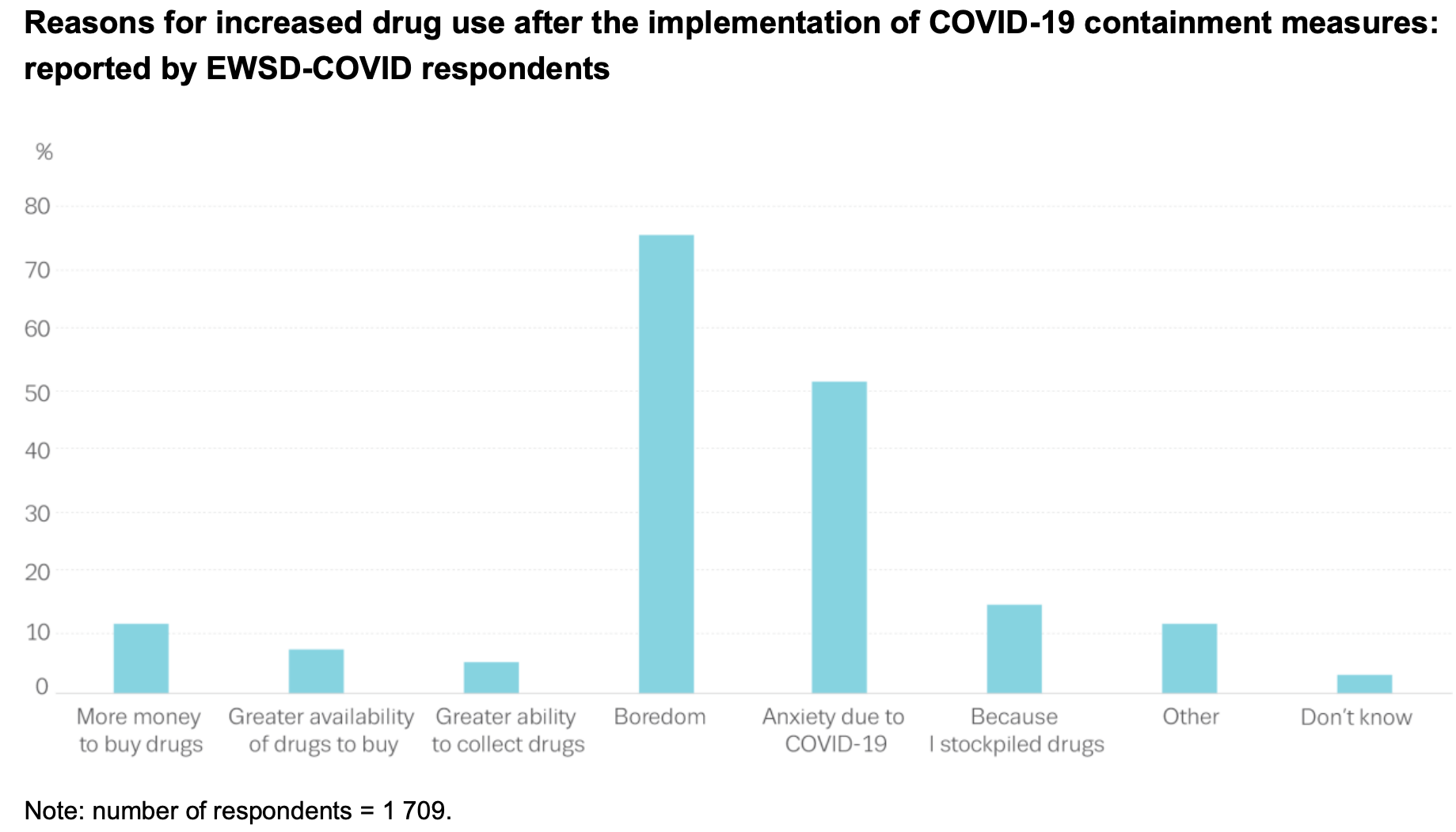
Gabriella Clare Marino via Unsplash
COVID-19 lockdown has changed how we use recreational drugs
Boredom and more free time increased alcohol consumption while increased anxiety drives benzodiazepine use
By the end of March 2020, the world found itself in lockdown. For many of us, a large part of socializing is centered around going out to meet friends and family, often with the consumption of recreational substances like alcohol. With the closure of so many late-night venues and disturbance to our usual schedules, have people adapted their use of drugs and alcohol?
To answer this question, a number of drug harm reduction organizations including the Global Drug Survey (GDS), European Monitoring Center for Drugs and Drug Addiction (EMCDDA) and Alcohol Change UK, among others, circulated online surveys aimed at understanding how recreational substance use has changed this year. The recently published findings highlight many common themes about how people adapted in lockdown. Boredom, anxiety, loneliness, and stress were often the reasons given across the surveys for motivating changes in behavior.
A common theme across surveys was that overall alcohol consumption increased. This was either due to binge drinking, or drinking more frequently, or a combination of both. Respondents reported that they simply had more free time and often found themselves bored which encouraged their alcohol consumption. It also appears that those living with a partner often (81 percent) found themselves drinking more due to their partner's consumption habits. Unfortunately, those who reported drinking more with their partner were more likely to report it had a negative impact on their relationship and seven percent of Alcohol Change UK participants said that household tensions were being worsened by changes in alcohol consumption.

A chart from the EMCDDA's report
Via EMCDDA
As well as the emotional toll that increased alcohol consumption can cause, it was also negatively affecting physical and mental health which are big factors in determining how well people cope with lockdown. Alcohol Change UK reported a 242 percent increase in visits to their help and advice pages in the first month of lockdown (which officially started in the UK on March 23). This self-awareness of alcohol consumption in response to lockdown was also reflected in GDS findings where 42 percent of respondents wanted to reduce the amount of alcohol they consumed as lockdown continued.
Interestingly, increased alcohol consumption occurred despite the closure of pubs, bars, and late-night venues where alcohol is commonly consumed. This suggests that access to these settings does not seem to be a major factor in encouraging alcohol drinking. However, closure of these venues did impact stimulant use. Both the EMCDDA and GDS reported decreases (20 percent and 40 percent respectively) in the use of both MDMA and cocaine from respondents. The primary reason for this decrease given by users was that there was less opportunity to use these substances due to late-night venue closures. These findings were also echoed in interviews conducted in Australia. 82 percent of participants who regularly reported using MDMA or related substances either reduced or stopped their use during lockdown. They also cited lack of in-person socialization and nightlife closures that led to decreased motivations to take these types of stimulants.
This decrease in stimulant use was also independently confirmed by wastewater analysis carried out in the EMCDDA report, since self-reporting doesn't always make for extremely accurate data. Both cities where the wastewater was analyzed, Amsterdam in The Netherlands and Castellon in Spain, saw substantial decreases in both MDMA and cocaine metabolites compared to the same time last year.

Via EMCDDA
Findings from the GDS, ERDS and EMCDDA point out that there was reportedly not much difficulty in obtaining stimulants during the initial stages of lockdown. So, the reported decreases in MDMA and cocaine use were caused by the decrease in opportunities to use such substances under lockdown and not due to limited access. Overall, these findings suggest that there is a link between setting and the use of MDMA and cocaine. Without the "appropriate" venue, many are discouraged from consuming these types of substances.
Benzodiazepines, like Valium and Xanax, are mild sedatives often prescribed short term to treat anxiety and insomnia. The increase in anxiety around world affairs, job security, money, and health, not to mention the effects of isolation causing increased feelings of loneliness and depression have likely driven an increase in benzodiazepine use. In the US, prescriptions for benzodiazepines dramatically spiked the first month into lockdown measures. Survey responses confirmed that this increase was caused by people seeking something to help them cope with the new pressures lockdown was bringing.
While this increase need not be an immediate cause for concern if benzodiazepines are used appropriately, it is when they are used in conjunction with other substances such as alcohol that there is a much greater chance of harm. Many people may also acquire benzodiazepines illicitly in an attempt to self-medicate. Recently, Public Health England released a warning about illicit pills being sold as benzodiazepines being linked to a number of deaths and hospitalizations. These pills contained a much stronger type of benzodiazepine than was expected, so that if consumed with other substances the risk of overdose increased. The increase in benzodiazepine use is one of the more alarming trends to be identified from these surveys given the potential for overdose and dangerous withdrawal symptoms if they are not used as prescribed.
Ultimately, these findings show that lockdown has clearly impacted how we use certain substances. Certainly, many of the trends indicate a level of emotional response to the pandemic, where substance use steps in as a coping mechanism. The important findings of these surveys in identifying the lockdown specific motivations and adaptions in substance use should go on to shape future public health policies. Indeed, researchers and the harm reduction organizations behind many of the surveys have written about how harm reduction measures relating to substance use need to become an integral part of how countries deal with the evolving pandemic and easing of lockdown measures. This will help ensure that some of the more potentially damaging trends identified by these surveys don't become part of our "new normal."
If you want to change your substance use, you can get immediate help by calling the Disaster Distress Helpline (1-800-985-5990) or text TalkWithUs to 66746.



Very interesting study. I am always curious how reliable self reporting is in surveys so I appreciated the added testing of wastewater to corroborate their results. Did the authors address issues of addiction? I am curious if they worry the increased alcohol consumption will lead to addictive behaviors after lockdowns are over or if lockdowns have reduced accessibility to counseling and support systems for recovering addicts.
I have also been curious about more illicit substances and if lockdowns changed their accessibility or consumption. It is interesting that this study found decreased consumption of MDMA and Cocaine despite their availability. I wonder if and how that differs in other countries or for other substances like opioids.